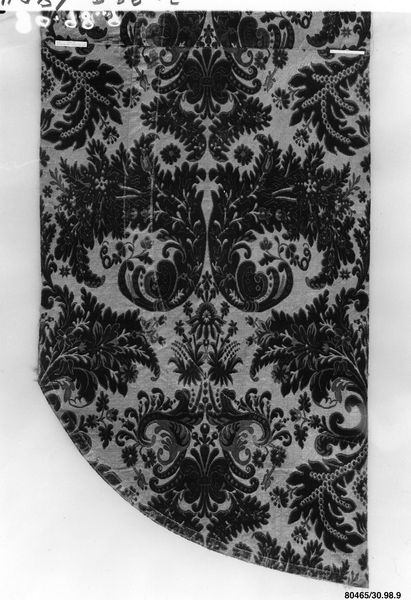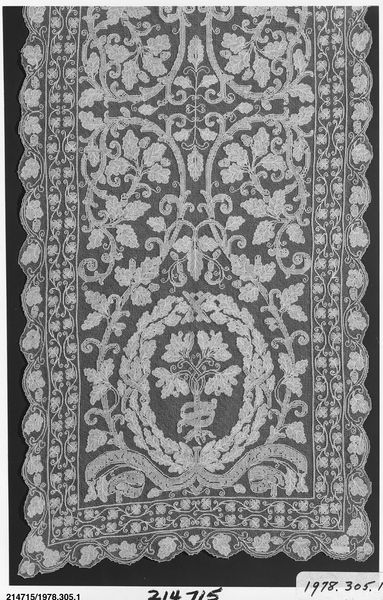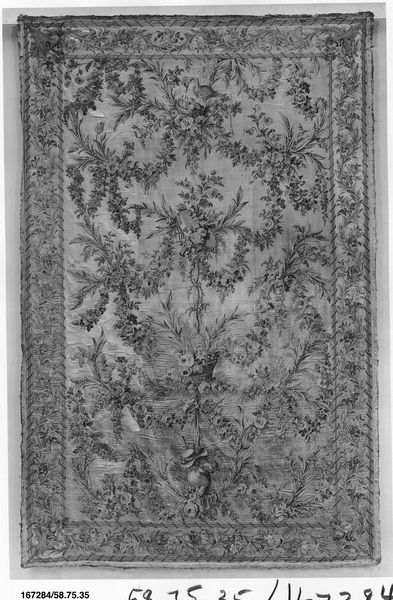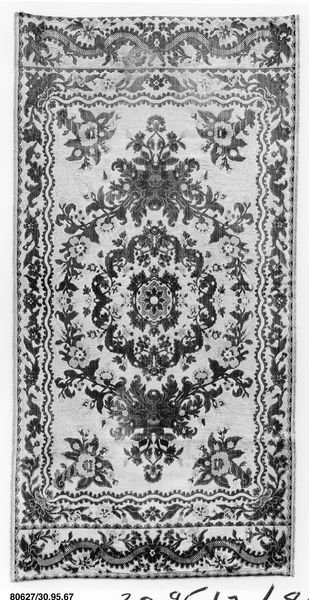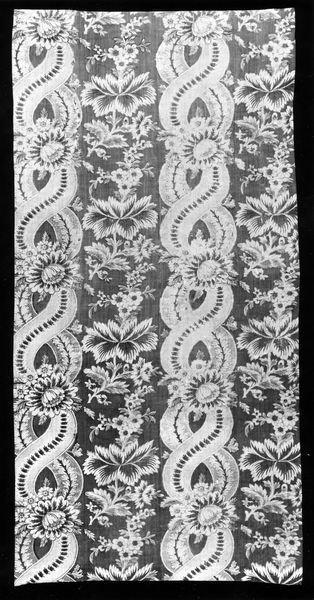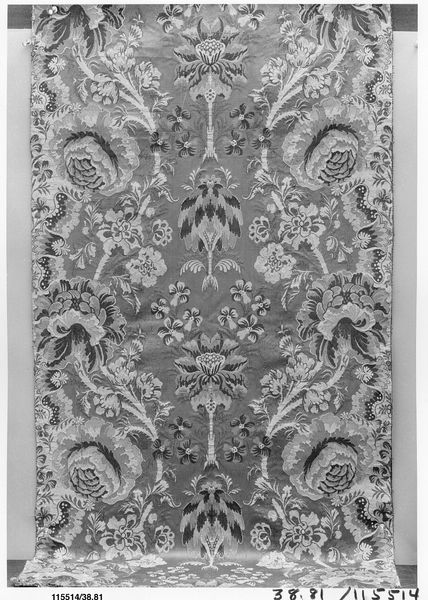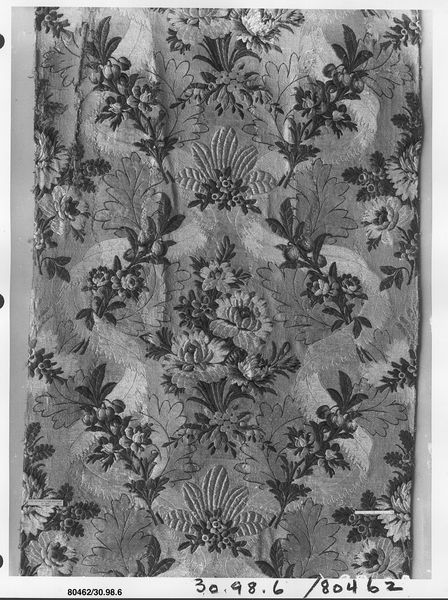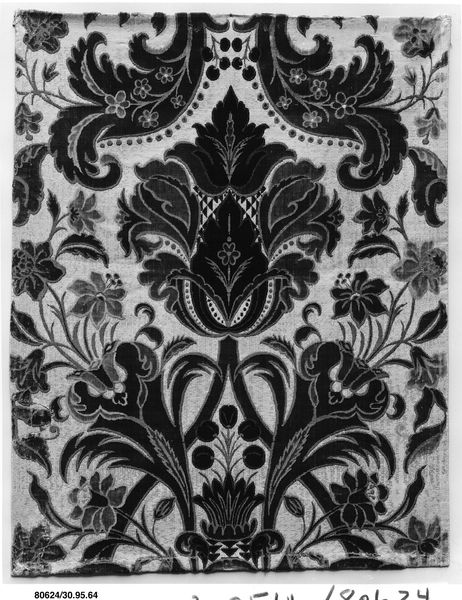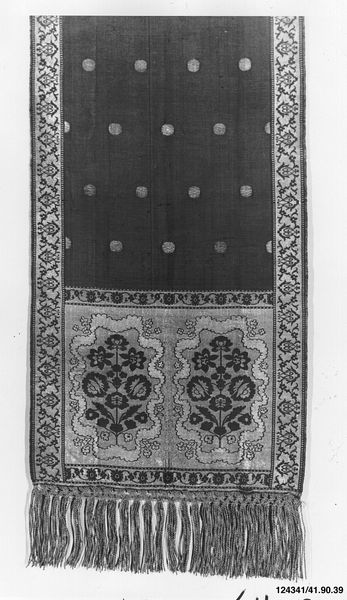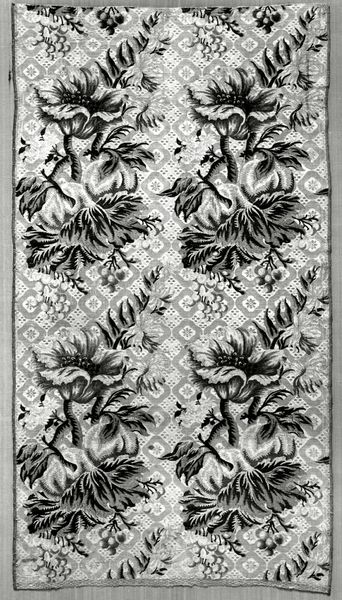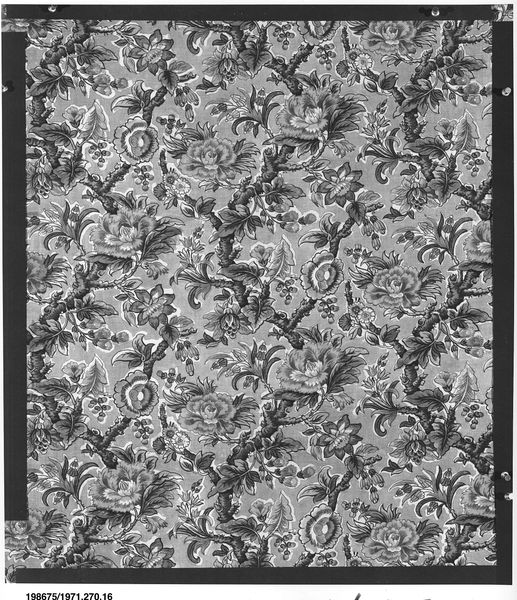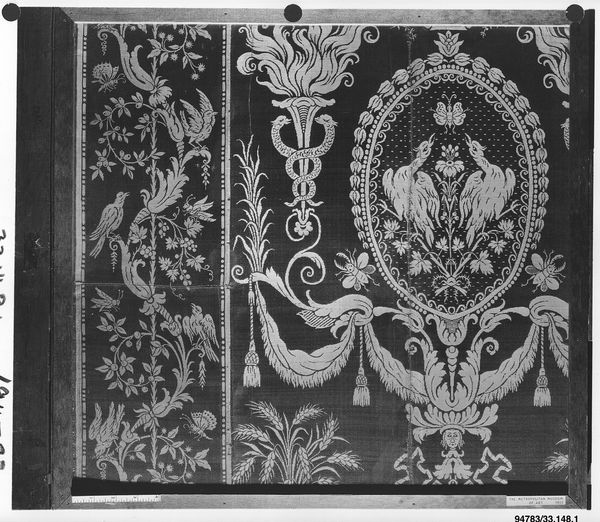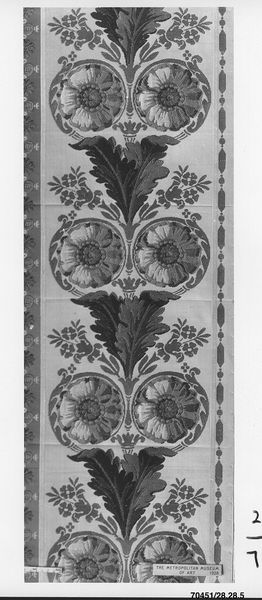
Piece 18th century
0:00
0:00
fibre-art, silk, weaving, textile, sculpture
#
fibre-art
#
baroque
#
silk
#
weaving
#
textile
#
sculpture
#
decorative-art
Dimensions: L. 34 x W. 19 3/4 inches (86.4 x 50.2 cm)
Copyright: Public Domain
Curator: Looking at this textile from the 18th century, titled "Piece," it strikes me first by its impressive craftsmanship, seemingly a baroque weaving in silk created by Giovanni Baritta and the Marzari Sons in Venice. Editor: It definitely radiates opulence! The symmetry of the floral patterns contrasted with what look like armaments suggests a deliberate commentary on power and beauty. Curator: Right. When examining such works, I always think about the specific materials and how they were sourced. Silk, being a luxury commodity, dictated who could commission and afford such pieces, not to mention the labor-intensive process of weaving itself. What do the visual motifs suggest about the function and value within its social context? Editor: Absolutely, the tapestry almost certainly adorned the home of an elite family, perhaps merchants or aristocrats. Venice at this time was undergoing significant transformations politically and economically, but artworks like this continued to reinforce social hierarchies. Who was profiting from the sale, the production, and what enslaved labor was necessary to obtain such materials? Curator: That brings up fascinating points. The meticulous detailing also hints at the high level of specialization within the Venetian textile industry, a complex economic web with distinct trades and skills required to achieve this result. Editor: And what narrative did this imagery— juxtaposing the softness of flora with these hard tools of warfare—convey about the role of wealthy men? It's not a clear picture of peace-loving patricians; perhaps a projection of themselves? What were the politics embedded into every carefully laid thread? Curator: You have this incredible eye, as usual, that prompts thinking. I had initially considered that perhaps this intersection of flora and weaponry reflects how nature itself was subjugated through militaristic expansion but I am moved by your comment about identity and status. Editor: Exactly, the artist is rarely removed from these broader historical realities. Appreciating works like "Piece" means asking these difficult questions and inviting our listeners to reflect upon the complexities. Curator: Thank you; it's that context that brings the work alive again! Editor: Yes. Hopefully this conversation does just that for our listeners.
Comments
No comments
Be the first to comment and join the conversation on the ultimate creative platform.
